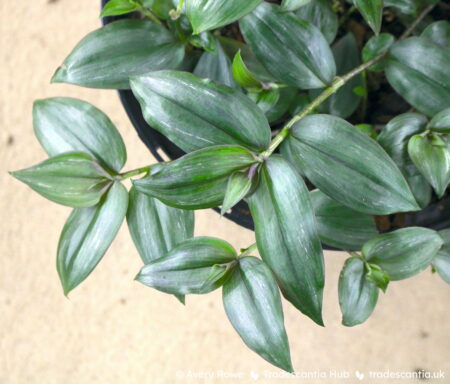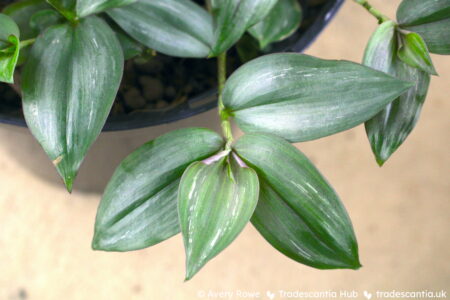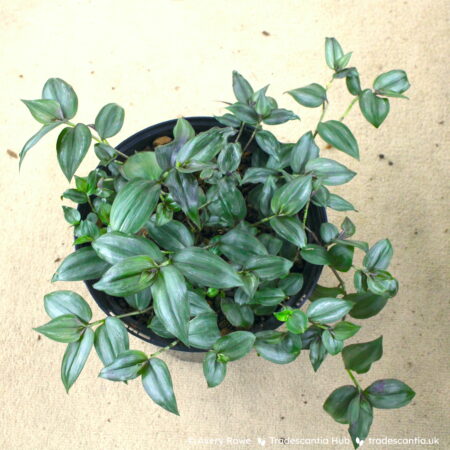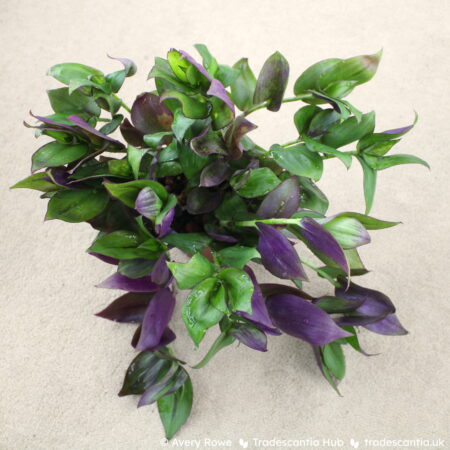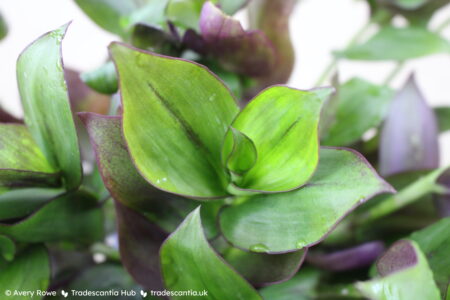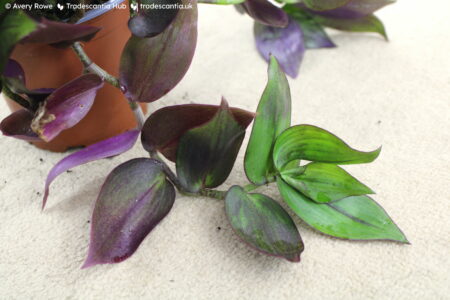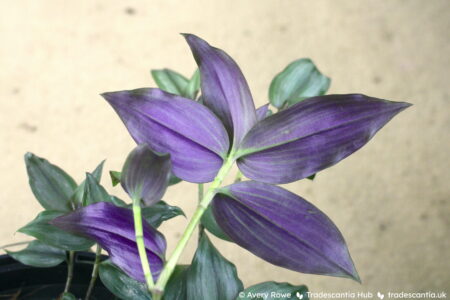Details
| Full name | Tradescantia zebrina ‘Flame Dance’. |
| Name status | Accepted, the valid name for a unique cultivar. First posted online with photos by Hora (2020). Established with a hardcopy description by Hatch (2022). Also known as:
The name was established under the misspelling ‘Flame Dancer’, but this is corrected to ‘Flame Dance’ based on earlier uses online. |
| Origins | Unknown. |
| Classification | The species Tradescantia zebrina is sometimes labelled with its botanical synonyms Tradescantia pendula, Tradescantia argentea, Zebrina pendula and Cyanotis zebrina. |
| Legal protection | None. |
| Availability | Available from many nurseries and growers. |
Description
Preserved as a herbarium specimen (“Tradescantia zebrina ‘Flame Dance'”, 2022).
Described with reference to the RHS Colour Chart (6th Edition: 2019 reprint).
The entire plant can vary its appearance dramatically in different conditions – changing in growth habit, leaf shape, size, and colour. It’s impossible to cover every possible variation, but this general summary describes a typical healthy plant.
| Species | Tradescantia zebrina. |
| Growth habit | Stems initially grow upright but soon start to sprawl and trail out of any container. |
| Foliage | Stems are 3-5mm wide, with internodes 2-6cm long – usually longest at the base and becoming more compact towards the ends of growing stems. The colour ranges from moderate reddish brown (177A) near the base to strong yellow green (145A) near the top. All stems are dotted with lighter green freckles and completely hairless. Leaves are very slightly asymmetrical pointed ovals, 6-9cm long and 2-4cm wide, smooth except for a few hairs at the top of the sheath. Each half of the leaf has a streaked stripe running along its length, sometimes so broken up it almost disappears. On newly-matured leaves, the base colour of the upper surface is moderate olive green (137B). The streaked stripes are light grey (191C) with a metallic sheen. The centre and edges of the leaf are speckled and blotched with greyish purple (N77A) or dark red (59A), which becomes stronger in brighter light. In moderate light, the older leaves do not change colour. But in intense light, they darken dramatically through shades of dark greyish yellowish brown (N200A), moderate olive brown (N199A), and dark greyish red (N186C). Leaf undersides are dark purplish red (N79A) to greyish purplish red (N77B). Leaf sheaths are strong yellow green (145A). |
| Flowers | It rarely flowers, but they are light purple and typical for the species. |
| Comparisons | Compared to Tradescantia zebrina ‘Discolor’, the foliage is almost identical, except that on ‘Discolor’ the silver stripes are always solid instead of broken up into streaks. |
References
Brickell, C. D., Alexander, C., Cubey, J. J., David, J. C., Hoffman, M. H. A., Leslie, A. C., Malécot, V., Jin, X. (2016). International Code of Nomenclature for Cultivated Plants. PDF link.
Hora, C. [@a_londeners_urban_jungle]. (2020, August 12). Tradescantia ‘Flame Dance’ is an eBay find and perfect candidate for #onwednesdaysweplantpink Swipe to see a quick video tutorial [Photograph and video]. Instagram. Archive Today link.
Hatch, L. (2022). Commelinaceae: A Guide to Modern and Historic Cultivars.
Tradescantia zebrina ‘Flame Dance’. (2022). [Herbarium specimen, barcode WSY0168481]. RHS Wisley Herbarium.

